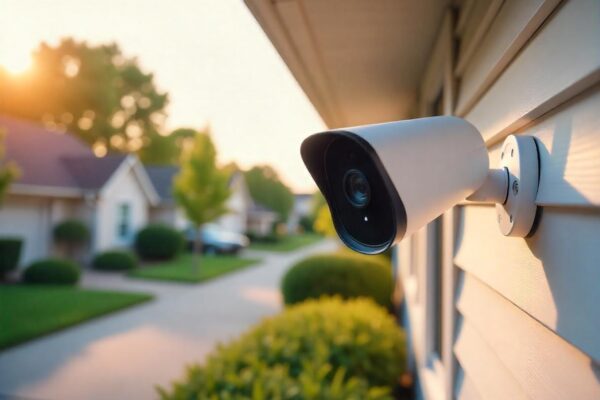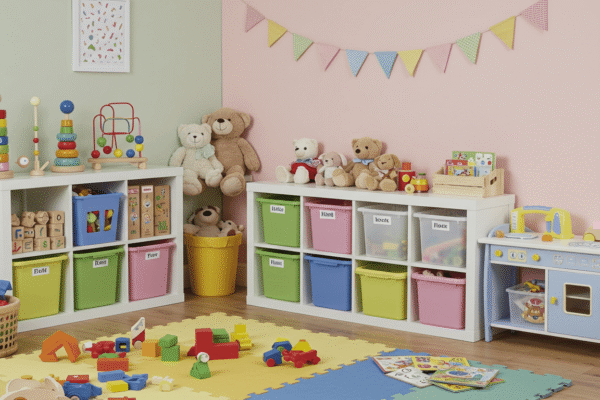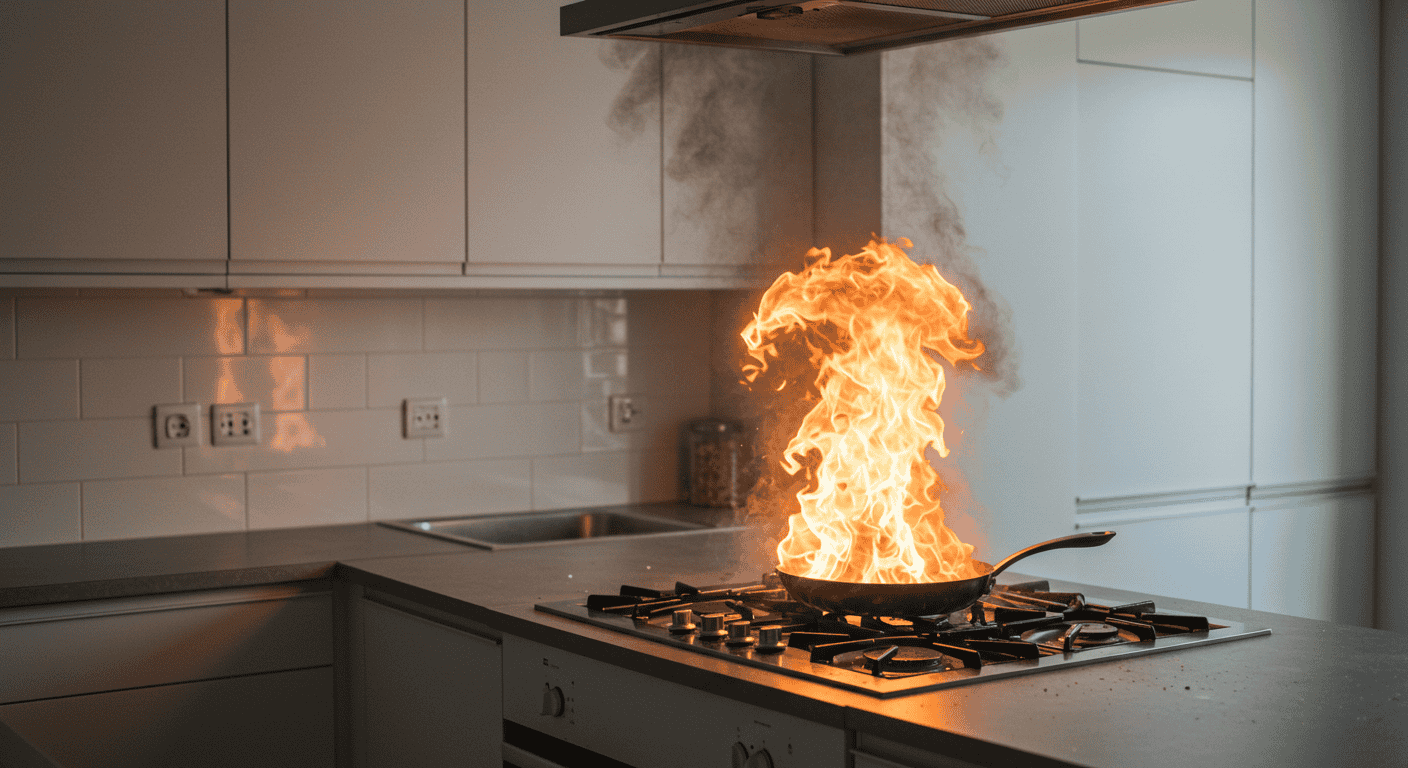Home Fire Safety & Emergency Preparedness is more than just installing detectors or keeping a fire extinguisher on hand—it’s about creating a comprehensive plan that protects your family and home from unexpected emergencies. By understanding fire hazards, practicing fire drills, and maintaining the right emergency preparedness supplies, you can reduce risks and respond confidently when disaster strikes. In this guide, we’ll walk you through practical tips, checklists, and strategies for keeping your household safe, making it easier for you and your loved ones to stay prepared without feeling overwhelmed.
1. Understanding Home Fire Risks
Being aware of home fire safety starts with understanding the potential risks in your living environment. Fires can start unexpectedly, and knowing the common causes and hazards in your home is the first step toward emergency preparedness. By identifying these risks early, you can take proactive measures to protect your family and minimize damage.
Common Causes of Household Fires
Electrical issues are one of the leading causes of residential fires. Faulty wiring, overloaded outlets, and damaged cords can spark fires that spread quickly. Regular inspections and avoiding overuse of power strips can greatly reduce this risk.
Kitchen accidents are another major source of home fires. Cooking with oil or grease can easily ignite if left unattended, and small mistakes like forgetting to turn off the stove can escalate into a dangerous situation.
Heating equipment such as space heaters, furnaces, and fireplaces can also contribute to fires if not properly maintained or placed too close to flammable materials. Always follow safety guidelines for installation and regular maintenance.
Candle and fireplace risks may seem minor, but they are responsible for numerous household fires every year. Unattended candles or sparks from a fireplace can ignite nearby fabrics or furniture, so always use proper holders and maintain a safe distance.
How to Identify Fire Hazards in Your Home
Identifying fire hazards in your home is crucial for effective emergency preparedness. A simple room-by-room assessment can help you spot potential dangers and take corrective actions. The following table provides a quick reference for common hazards and prevention tips:
| Area of Home | Potential Fire Hazard | Prevention Tip |
|---|---|---|
| Kitchen | Grease fires | Keep flammable items away, never leave cooking unattended |
| Living Room | Candles, fireplace | Use proper holders, maintain clearance from fabrics |
| Bedroom | Electrical devices | Avoid overloading outlets, unplug devices when not in use |
| Garage | Flammable liquids | Store safely in ventilated cabinets |
By regularly reviewing these areas and implementing the suggested precautions, you can significantly reduce the risk of a fire occurring in your home. Regular checks and awareness are key components of home fire safety & emergency preparedness.

2. Smoke and Carbon Monoxide Detection
An essential part of home fire safety & emergency preparedness is making sure your home is equipped with reliable smoke detectors and carbon monoxide (CO) detectors. These devices provide the earliest warning signs of danger, giving your family valuable time to evacuate safely. Without them, a small fire or invisible buildup of carbon monoxide can quickly become life-threatening.
Installing Smoke and CO Detectors
When it comes to emergency preparedness, proper placement of detectors is just as important as having them. Every bedroom and hallway leading to sleeping areas should have a smoke detector, while each floor—including the basement—should have at least one. CO detectors should be placed near bedrooms, since carbon monoxide is colorless and odorless, making it impossible to detect without a monitor. Avoid installing detectors near windows, vents, or fans, where airflow may interfere with accurate readings.
Maintenance and Testing Schedule
Owning detectors is not enough—you must also ensure they remain functional. Test each unit monthly by pressing the test button and replace batteries at least once a year, or sooner if the unit signals a low battery. Dust and debris can also reduce effectiveness, so clean detectors regularly. Just like any safety equipment, detectors have a limited lifespan and must be replaced according to the manufacturer’s recommendations.
Here’s a simple reference table for detector care:
| Detector Type | Recommended Placement | Testing Frequency | Replacement Interval |
|---|---|---|---|
| Smoke Detector | Bedroom, hallway | Monthly | Every 10 years |
| CO Detector | Near sleeping areas | Monthly | Every 5 years |
By maintaining your detectors consistently, you ensure your family receives early warnings, making it easier to act quickly in case of fire or carbon monoxide exposure. Staying proactive with these small steps can make a life-saving difference in home fire safety & emergency preparedness.

3. Fire Escape Planning
One of the most critical elements of home fire safety & emergency preparedness is having a well-thought-out fire escape plan. Even with detectors and safety equipment, a lack of clear exit routes can turn a small fire into a dangerous situation. Planning and practicing escape routes ensures that every family member knows exactly what to do in an emergency.
Creating a Home Fire Escape Plan
Start by mapping out all possible exits in your home. Each bedroom should have at least two escape options—typically a door and a window. Assign a meeting point outside the home where everyone can safely gather, so you can quickly account for all family members. Consider any unique needs in your household, such as young children, elderly family members, or pets, and ensure your plan accommodates them. Clear pathways and easy access to ladders or other escape tools are essential for a smooth evacuation.
Practicing Fire Drills
Planning alone is not enough; regular practice is key. Conduct fire drills at different times of day, including during the night when visibility may be limited. Practicing in varied scenarios helps family members stay calm and react quickly under stress. Make drills realistic but safe, and review any obstacles or areas of confusion after each practice.
Here’s a simple table to help organize your home fire escape plan by room:
| Room | Primary Exit | Secondary Exit | Notes |
|---|---|---|---|
| Bedroom 1 | Door to hallway | Window to backyard | Keep ladder accessible |
| Living Room | Front door | Back door | Clear obstacles in pathway |
By mapping exits, assigning responsibilities, and practicing regularly, your family can evacuate safely in the event of a fire. These small but crucial steps are a cornerstone of home fire safety & emergency preparedness, providing peace of mind and real protection.
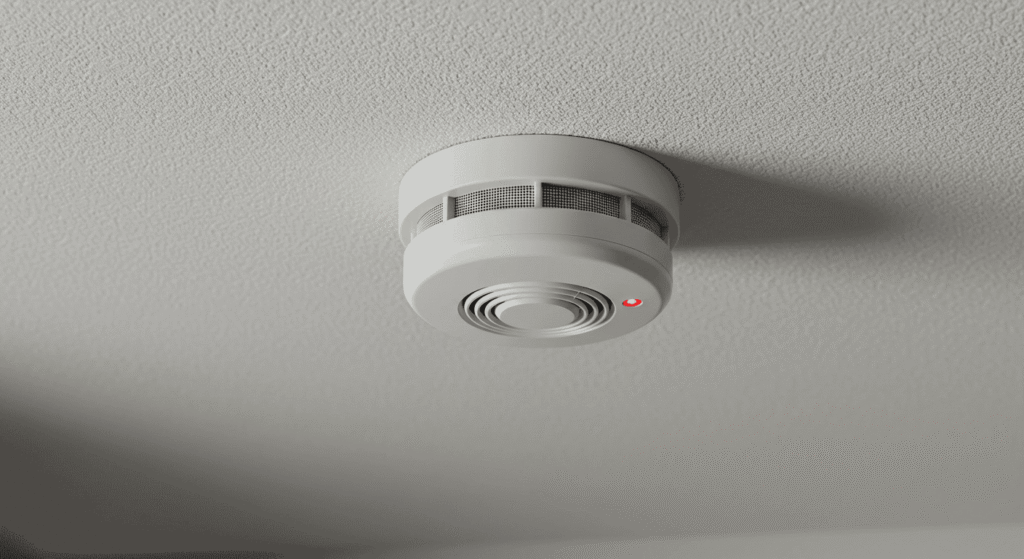
4. Fire Extinguishers and Their Use
A key component of home fire safety & emergency preparedness is knowing how to use a fire extinguisher effectively. While detectors alert you to danger, having the right equipment and the knowledge to use it can prevent a small fire from turning into a major disaster.
Choosing the Right Type for Your Home
Selecting an appropriate fire extinguisher depends on the types of fires most likely to occur in your home. Consider having units that can handle common household fires, such as those involving cooking oils, electrical appliances, and flammable liquids. Place extinguishers in accessible areas like the kitchen, garage, and near exits. Remember that having a fire extinguisher is only useful if all household members know how to operate it safely.
How to Use a Fire Extinguisher Safely
Using a fire extinguisher may seem intimidating, but with a clear step-by-step approach, it becomes manageable even under stress. Always ensure you have a clear escape route and never attempt to fight a fire that is spreading quickly.
Follow this simple guide for effective use:
| Step | Action |
|---|---|
| 1 | Pull the pin |
| 2 | Aim at base of fire |
| 3 | Squeeze the handle |
| 4 | Sweep side to side |
Regularly check that your extinguishers are fully charged and in working order. Practicing these steps during non-emergency situations can help everyone in your household respond calmly and efficiently during a real fire. Understanding and using fire extinguishers correctly is a fundamental part of maintaining home fire safety & emergency preparedness.
5. Emergency Preparedness Kits
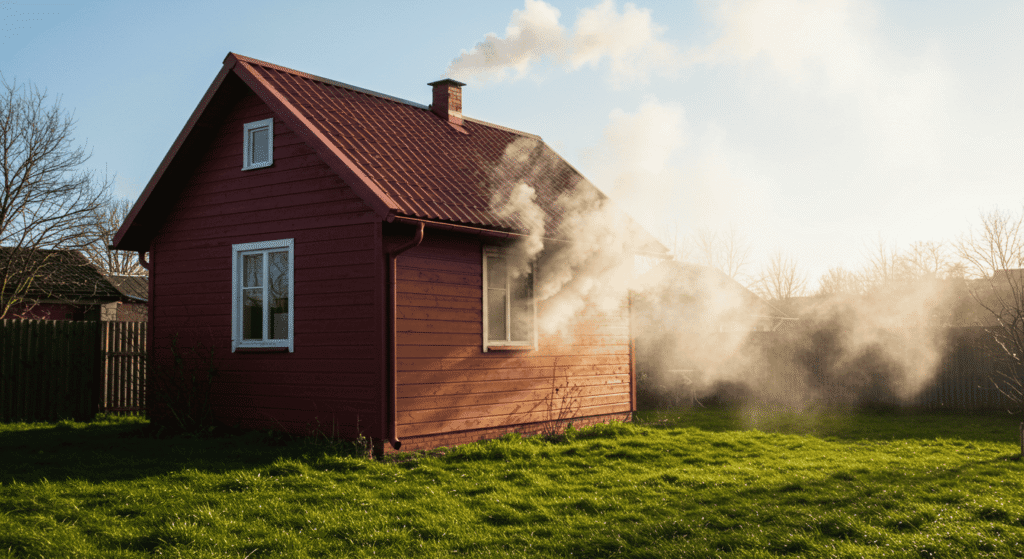
Creating a well-stocked emergency preparedness kit is a vital aspect of home fire safety & emergency preparedness. In the event of a fire or other emergency, having essential supplies on hand ensures that your family can stay safe and cared for until help arrives or it is safe to leave the home.
Essentials to Include
A comprehensive kit should cover basic needs for survival, including water, non-perishable food, lighting, and medical supplies. Make sure to include items such as a flashlight, extra batteries, a first-aid kit, and any medications required by family members. Rotating food and water supplies regularly ensures everything remains usable and effective during an emergency.
Organizing the Kit for Easy Access
Equally important to having the items is organizing them in a way that allows quick access during a stressful situation. Store your kit in a central, easily reachable location and ensure all family members know where it is. The following table provides a clear guideline for assembling your emergency preparedness kit:
| Item | Quantity | Notes |
|---|---|---|
| Water | 1 gallon per person per day | 3-day supply minimum |
| First Aid Kit | 1 kit | Include bandages, antiseptic |
| Flashlight + Batteries | 1 each | Keep in easy-to-reach location |
By preparing and maintaining a ready-to-use kit, you reduce stress during emergencies and improve the safety and security of your household. This proactive approach is a cornerstone of effective home fire safety & emergency preparedness.
6. Special Considerations for Vulnerable Family Members
Effective home fire safety & emergency preparedness involves thinking beyond basic precautions and addressing the needs of vulnerable family members. Children, elderly relatives, and pets may require additional support during an emergency, and planning ahead can prevent confusion and ensure everyone’s safety.
Children, Elderly, and Pets
Children may panic or struggle to follow instructions during a fire, while elderly family members might have mobility or sensory limitations. Pets can become frightened and hide, making it harder to evacuate safely. Preparing for these situations includes assigning clear roles, practicing with family members, and ensuring everyone knows what to do in an emergency.
Assigning Responsibilities During an Emergency
Assigning responsibilities ensures a smooth and efficient response when seconds count. Each family member should have a clear task tailored to their abilities. Pets should also be accounted for, with carriers or leashes ready for quick evacuation. The following table provides an example of how responsibilities can be divided:
| Family Member | Responsibility |
|---|---|
| Parent 1 | Lead evacuation |
| Parent 2 | Gather emergency kit |
| Child | Follow assigned exit route |
| Pet | Secure in carrier or leash |
By clearly defining roles and practicing them regularly, your family can respond calmly and efficiently during an emergency. Addressing the needs of vulnerable members is a critical aspect of home fire safety & emergency preparedness, helping ensure that no one is left behind.
7. Fire Prevention Habits
Maintaining consistent fire prevention habits is one of the most effective ways to enhance home fire safety & emergency preparedness. Small daily routines, combined with seasonal checks, can significantly reduce the risk of a fire occurring in your home.
Daily Safety Practices
Daily habits play a crucial role in preventing household fires. Always unplug unused electrical devices to avoid overloaded circuits, supervise cooking to prevent kitchen accidents, and practice safe candle use by keeping flames away from fabrics and never leaving them unattended. Over time, these small practices become second nature and provide ongoing protection for your household.
Seasonal & Routine Checks
Beyond daily routines, performing seasonal and routine checks ensures that your home remains safe year-round. Inspect heating equipment during the colder months, maintain electrical wiring, and clean chimneys or vents to prevent buildup that could ignite. Regularly reviewing these areas helps identify hazards before they become serious problems.
Here’s a simple table to guide your seasonal and routine fire safety tasks:
| Month/Season | Safety Task |
|---|---|
| January | Inspect heating equipment |
| March | Check smoke/CO detectors |
| June | Clear yard of flammable debris |
| September | Review fire escape plan |
By combining daily precautions with seasonal reviews, you can establish a proactive approach to home fire safety & emergency preparedness that protects both your property and your loved ones.
8. Staying Calm During an Emergency
Even with all the right home fire safety & emergency preparedness measures in place, remaining calm during a fire is critical. Panic can lead to mistakes, slow evacuation, or missed safety steps. Preparing your family mentally and having clear communication strategies can make all the difference.
Psychological Preparation
Teaching your family to stay calm is an essential part of emergency preparedness. Regularly practicing fire drills, reviewing escape routes, and discussing emergency scenarios helps everyone respond rationally under stress. Encourage family members to take deep breaths, focus on their assigned roles, and follow the escape plan step by step. Confidence built through preparation reduces fear and improves decision-making during an actual emergency.
Communication During a Fire
Clear communication is just as important as knowing the physical steps of evacuation. Assign specific contact points and make sure everyone knows the emergency numbers to call. Establish a safe family meeting point outside the home where everyone can be accounted for. Consider assigning an out-of-town contact who can coordinate information if local communication lines are overloaded.
Here’s a table to organize your emergency communication plan:
| Contact Type | Details |
|---|---|
| Fire Department | 911 (or local equivalent) |
| Family Meeting Point | Backyard or neighbor’s house |
| Emergency Contact | Out-of-town relative or friend |
By preparing psychologically and setting up clear communication channels, your family can stay composed and act efficiently during a fire. These strategies complete the foundation of home fire safety & emergency preparedness, ensuring that everyone knows what to do and where to go in an emergency.
Conclusion: Strengthening Your Home Fire Safety & Emergency Preparedness
Building strong habits around home fire safety & emergency preparedness ensures your family is ready for the unexpected. From identifying hazards and maintaining detectors to practicing escape plans and keeping an emergency kit, each step adds a vital layer of protection. Staying proactive not only reduces risks but also gives you confidence that your home and loved ones are as safe as possible.





